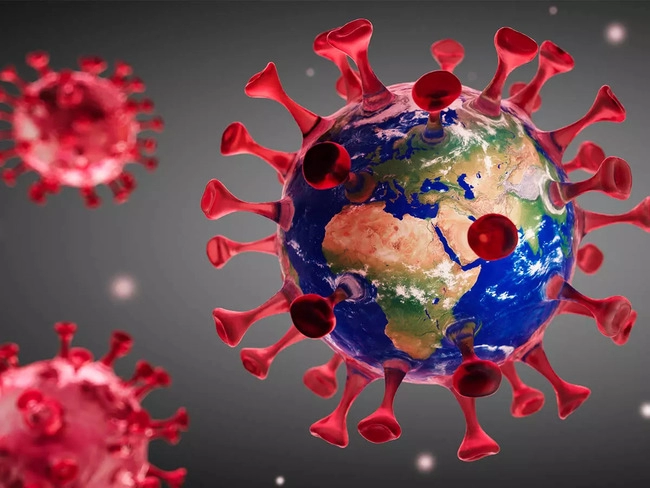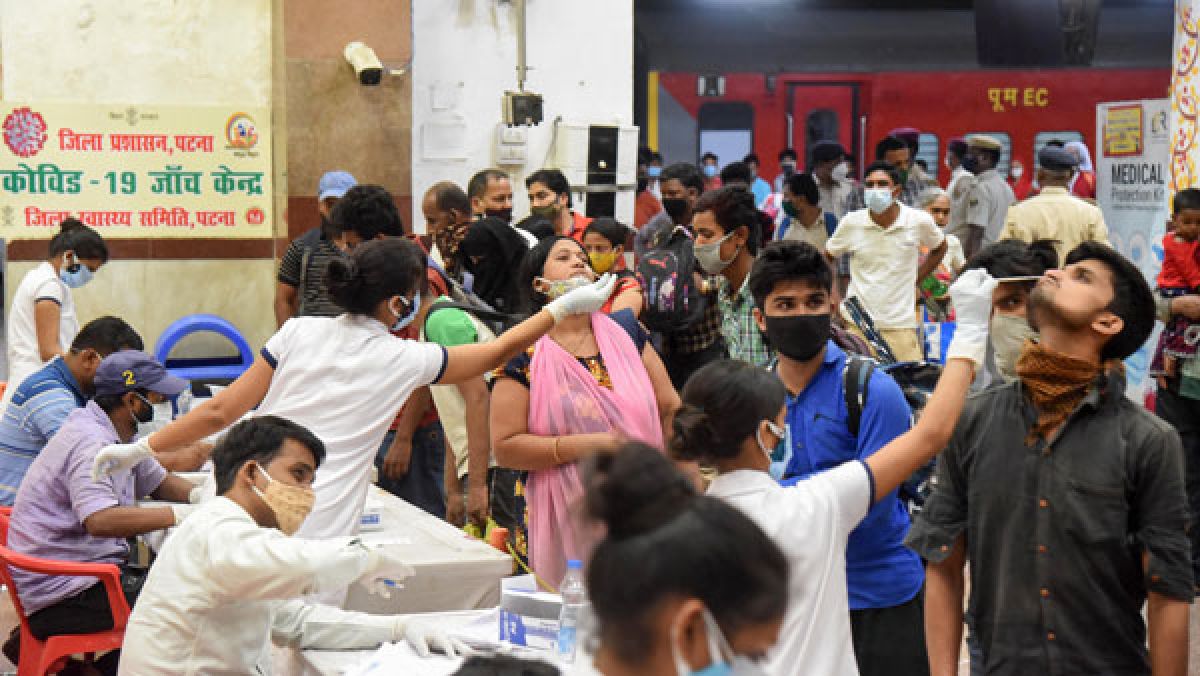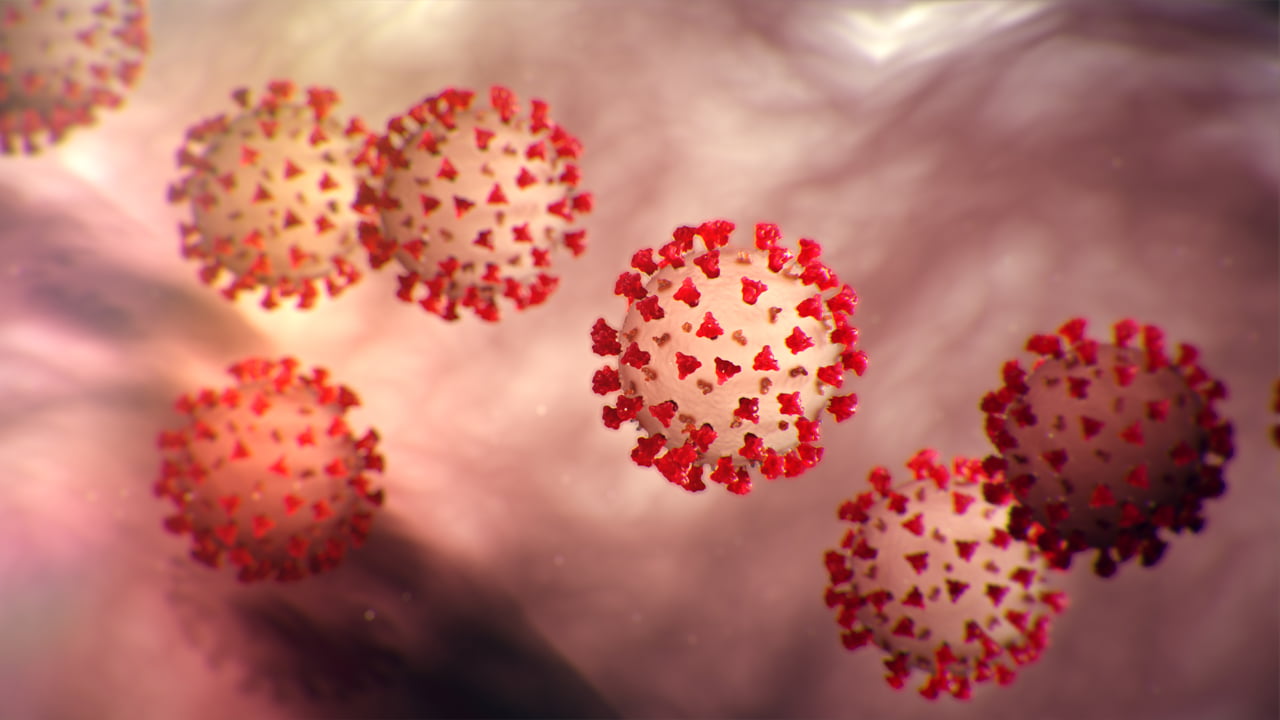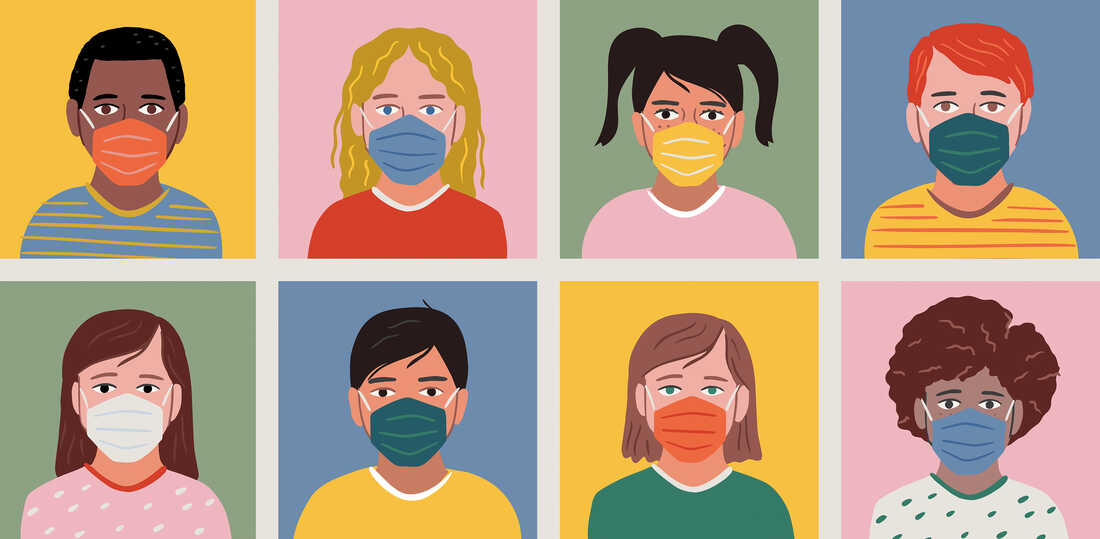COVID-19 Fourth Wave: XE COVID Variant Spreads 10% Faster Than Omicron, Symptoms of The Virus So Far

COVID-19 Fourth Wave: XE COVID Variant Spreads 10% Faster Than Omicron, Symptoms of The Virus So Far
The new Covid version XE has arrived in India, with the first instance being recorded in Mumbai, the financial hub. A 50-year-old South African costume designer who arrived in Mumbai on February 10 was found to have the XE strain. She didn’t show any symptoms at first.
Her sample was sent for genome sequencing, and it was found that she was infected with Omicron XE. According to the Maharashtra government, there has been an inflow of Omicron XE in Mumbai. The new version XE is a hybrid of two Omicron sub-variants, BA.1 and BA.2.
The infection is spreading swiftly in many countries, including the United Kingdom. Meanwhile, health professionals tried to play down fears about XE, saying that despite being around since January, the strain hasn’t caused a spike in cases like Omicron. Still, they did advise strict adherence to Covid-appropriate behaviour.

What are the Omicron XE symptoms?
1. In terms of symptoms, some patients infected with the Omicron XE strain may experience minor symptoms, while others may experience severe symptoms.
2. The virus’s severity is determined mainly by immunisation. Those who have been vaccinated may experience only minor side effects. Those who have not been vaccinated may experience severe symptoms.
3. Fever, sore throat, cough and cold, skin irritation, and gastrointestinal problems are some of the symptoms of the XE variety.
4. There is no evidence that the XE form of Covid-19 is more severe; all Omicron variations seem to be less harsh so far.
5. According to the UK Health Protection Agency, XE causes symptoms like runny nose, sneezing, and sore throat instead of the original strain, which causes fever, cough, and loss of taste and smell.
6. Initial evidence suggests that XE can propagate 10 per cent faster than other Omicron mutations.
7. The new XE variation is a mutant hybrid of two other Omicron variants, BA.1 and BA.2, and is responsible for the global spread of cases.
8. The new mutant is around 10% more transmissible than the BA.2 sub-variant of Omicron.
9. Even though there are now few cases of XE over the world, its high transmission potential suggests that it could become the dominant strain shortly.
10. XE (BA.1-BA.2) was first found in the United Kingdom on January 19, with less than 600 sequences reported and confirmed.
11. “Estimates for the launch day imply a community growth rate of 10% compared to BA.2, but further confirmation is needed,” it stated.
12. According to the UK’s Health Protection Agency, 637 cases of XE had been found in England as of March 22.
13. Thailand and New Zealand have both spotted the XE variant.

All About Coronavirus XE Variant
Just as things were returning to normal, rumours of the Covid-19 XE version began to circulate. At least three schools in Ghaziabad and Noida have closed their doors and switched to online classes in the last two days after kids and instructors tested positive for the coronavirus.
According to a source, daily Covid cases in the national capital Delhi reached 299 on Wednesday, with a positive rate of 2.49 per cent. The city has registered 501 new cases in the last two days, bringing the total number of active topics to 814.
Last Monday, the WHO issued a warning about a new mutation that may be more transmissible than any last Covid-19 type.
‘XE’ is a mutant hybrid of the two earlier Omicron variants, BA.1 and BA.2, which were widely distributed over the world. It was first found on January 19 in the United Kingdom, and a few hundred cases have been reported and confirmed since then.
XE has a 10 per cent edge in community growth rate over the BA.2 subvariant, which is already the most contagious.
“The XE recombinant (BA.1-BA.2) was first found in the UK on January 19,” according to a recent WHO study. “Since then, less than 600 sequences have been reported and confirmed.”
XE causes symptoms like runny noses, sneezing, and sore throats, compared to the original strain of the virus, which caused fever, coughing, and a loss of taste or smell.
The NHS included shortness of breath, fatigue, aching body, a headache, a sore throat, a blocked or runny nose, loss of appetite, diarrhoea, feeling nauseous, or being sick.
According to the agency, 637 cases of XE had been detected in England as of March 22.
Thailand and New Zealand have both recognised the XE variation. According to the WHO, anything data is needed before more can be said about the mutation.

Will the 4th Wave in India be caused by the new COVID variant XE? Here’s What the TIGS Chief Says
Hours after the WHO warned that a COVID variant XE has been detected in the UK that is more transmissible than the BA.2 sub-variant of Omicron, Rakesh Mishra, the director of the Tata Institute for Genetics and Society, urged people not to panic and to monitor the variant’s development closely.
Rakesh Mishra, speaking to ANI, stated that the new mutant XE first appeared in mid-January but that there is no cause to panic. “Only 600 cases have been recorded worldwide thus far.” “However, we must keep a tight eye on it,” he added.
Will it result in a fourth COVID wave in India? According to Rakesh Mishra, there is no indication that it will create another COVID outbreak in India.
However, he emphasised that everyone should take precautions to prevent the virus from spreading and follow COVID guidelines.
He noted that while some members of society appear quick to pronounce the pandemic gone, people should follow principles like wearing masks, delivering vaccines according to protocol, and avoiding needless clustering in crowded settings.
Earlier in the day, the WHO announced that a new COVID mutant is known as ‘XE’ had been discovered in the UK and that it may be more transmissible than COVID-19’s BA.2 sublineage.
According to the WHO, XE is a COVID-19 recombinant of the Omicron BA.1 and BA.2 sublineages. “The XE recombinant (BA.1-BA.2) was found on January 19 in the United Kingdom, and >600 sequences have been reported and verified since then,” according to the WHO.

First case of XE variant of coronavirus confirmed in Mumbai, says civic body BMC
On April 9, the city’s civic body, the BMC, reported the city’s first confirmed case of the XE type of coronavirus. According to the World Health Organization, a 67-year-old completely vaccinated man from a Santa Cruz suburb has tested positive for the variation, which is 10 times more transmissible than Omicron.
According to BMC, the man went to Vadodara on March 11, and his condition deteriorated after a meeting at the hotel, after which he was confirmed positive for Covid. He returned to Mumbai because the symptoms were not obvious.
However, after his genome was sequenced, the XE variation was discovered in his report.
According to the BMC, the man, who has been double-vaccinated, shows no symptoms and is perfectly stable.

Experts Say the New ‘Deltacron’ Variant Is Rare and Similar to Omicron.
Scientists have recently found that a combination of the Omicron and Delta coronavirus strains has circulated in many European countries. Here’s what we know so far about the hybrid, which has been dubbed Deltamicron or Deltacron in a Frankensteinian manner.
How was it discovered?
In February, Scott Nguyen, a scientist at the Washington, D.C. Public Health Laboratory, was looking through GISAID, an international database of coronavirus genomes, when he discovered something unusual.
He discovered samples taken in January in France that had been recognised as a combination of Delta and Omicron variations by researchers. People can be infected by two coronavirus strains simultaneously in rare situations. However, when Dr Nguyen examined the data more closely, he discovered evidence suggesting this conclusion was incorrect.
Instead, each virus in the sample appeared to have a mix of genes from the two varieties. Such viruses are referred to as recombinants by scientists. When Dr Nguyen searched for a similar pattern of mutations in the Netherlands and Denmark, he discovered more probable recombinants. In an interview, he added, “That prompted me to suspect that things might be real.”
Dr. Nguyen posted his discoveries on the cov-lineages internet forum, where scientists help one other track down new varieties. These partnerships are critical for double-checking potential novel variants: A putative Delta-Omicron recombinant discovered in Cyprus in January was proved to be a mirage caused by shoddy scientific work.
“There needs to be proof to establish that it’s real,” Dr Nguyen added. It turned out that Dr Nguyen had been right.
In an interview, Etienne Simon-Loriere, a virologist at the Institut Pasteur in Paris, said, “That day, we rushed to double-check what he suspected.” “And, yes, we could swiftly confirm that this was the case.”
Dr Simon-Loriere and his colleagues have discovered more recombinant virus samples since then. They were eventually able to collect a frozen sample from which they could effectively grow new recombinants in the lab, which they are presently examining. On March 8, the team published the recombinant’s first genome on GISAID.
Where has the new hybrid been found?
An international database of viral sequences reported 33 novel variant samples in France, eight in Denmark, one in Germany, and one in the Netherlands in a March 10 update.
According to Reuters, Helix, a genetic sequencing business, discovered two cases in the United States. Dr Nguyen and his colleagues are re-examining some database sequences from the United States to uncover more cases.
Is it dangerous?
It’s easy to be concerned about a Delta-Omicron hybrid. However, there are several reasons to remain calm.
“This isn’t a new issue,” Dr Simon-Loriere explained.
For starters, the recombinant is highly uncommon. Even though it has been around since January, it has yet to show the ability to develop exponentially.
The genome of the recombinant form, according to Dr Simon-Loriere, also suggests that it isn’t a new phase of the pandemic. The spike gene, which codes for the virus’s surface protein, is almost entirely derived from Omicron. Delta makes up the rest of the genome.
When it comes to invading cells, the spike protein is the most critical element of the virus. Antibodies developed due to diseases and immunisations are mostly directed at it. People’s resistance against Omicron, which they acquired through infections, vaccines, or both, should function just as effectively against the new recombinant.
“Because the virus’s surface is so similar to Omicron, the body will recognise it just like Omicron,” Dr Simon-Loriere explained.
According to scientists, the Omicron’s characteristic spike may also play a role in its lower risk of triggering the severe disease. It is used by the variation to infiltrate cells in the nose and upper airway successfully but not deep in the lungs. The new recombinant might have the same proclivity.
Dr Simon-Loriere and other researchers test the novel recombinant in cell dishes to see how it behaves. Experiments with hamsters and mice will yield further information. Those experiments will not give results for several weeks.
“We don’t have any findings because it’s so new,” Dr Simon-Loriere added.
Where do recombinant viruses come from?
Two variants of the coronavirus can infect a person at the same time. If you go to a crowded pub where several people are infected, you may inhale viruses from more than one of them.
It’s conceivable for two viruses to infect the same cell at once.
Recombination of coronaviruses is probably not rare. However, most of these genetic shuffles will result in evolutionary dead ends. Viruses having a combination of genes may not perform as their forefathers.
Is it actually called Deltacron?
For the time being, the novel hybrid is referred to as the AY.4/BA.One recombinant by some scientists. That is likely to alter in the coming weeks.
Scientists have devised a technique for formally designating novel coronavirus lineages. Recombinant viruses are given two-letter abbreviations that begin with X. For example, XA is a hybrid that emerged in December 2020 from a mix of the Alpha variation and another coronavirus lineage known as B.1.177.
Dr Nguyen’s new recombinant will most likely be called XD.
However, on March 8, the second group of French researchers published a study online with their analysis of the same recombinant, causing the process to become jumbled.
They isolated the virus in the same way as Dr Simon-Loriere and his colleagues did. Dr Nguyen chastised the team for failing to acknowledge Dr Simon-group Loriere’s with the first recombinant virus genomes. He criticised the researchers for coining obscene nicknames for the recombinant, which were quickly picked up in news articles and social media posts, implying that it was a fraud or created in a lab.
“These unusual names have sparked a flurry of conspiracy ideas,” Dr Nguyen added.
It will be interesting to see how well the name XD sticks.

8 Ways to Protect Yourself from the New Coronavirus Strains
The best defence against the variants is to continue to decrease the risks of exposure.
It’s assumed that the new strains have spike proteins that remain ‘open’ longer than the original, allowing them to enter human cells more efficiently and become more infectious. This indicates that spreading the virus from one person to another would need fewer viral particles.
Here are a few ways to keep yourself and others safe.
1. Follow the ABCs of prevention
Following the ABCs of prevention, which were used to prevent measles before a vaccine was introduced, is the greatest way to ensure safety.
The point that until we get vaccines in the arms of at least two-thirds of the population, we need to stick to the ABCs to keep the spread as minimal as possible.
The ABCs are as follows:
Airway: Protect yourself with barrier protection.
Bubble: Assemble a group of people you can trust both virologically and emotionally.
Contacts: If someone in your bubble contracts the virus, it’s simple to track them down.
2. Reduce the size of your social bubble
Each person you spend time with indoors who does not dwell in your home raises your risk and complicates contact tracing.
This would be a good moment to minimise the number of families in your bubble.
While total isolation is impractical, safe alternatives are available.
Because we are social animals, seclusion is never desirable. However, if you can find a safe bubble of a few extremely trustworthy people, you should be able to survive the pandemic. However, having such a large circle could be difficult to manage. It should be in the single digits.
3. Limit onsite shopping
Instead of taking your time shopping for food, clothing, and other basics, attempt to cut down on the amount of time you spend indoors.
Every minute you spend shopping indoors raises your risk. To further decrease your exposure, choose choices like curbside pickup or delivery service whenever available.
4. Reconsider work and school environments
If you don’t work remotely, it is recommended holding meetings outside if possible.
Many diseases are acquired through interaction at work. Continue to socially isolate yourself at work, move meetings or other gatherings outside, if possible, or go virtual.
School learning pods should also be reduced in number or moved outside; weather permitted.
5. Worship wisely
Churches, along with bars, jails, nursing facilities, and indoor eateries, were ranked as high risk for viral transmission in a survey of epidemiologists conducted by the nonprofit journalism centre CivicMeter.
We’ve seen how crowded meetings with singing and other forms of vocal participation may result in a huge spread. Praying at home may not feel as pleasant as praying at a church, but it will make you feel safe.
Outdoor and virtual services can also help you connect with your religious community while reducing the chance of anyone being hurt.
6. Mask up
According to the CDC, experimental and epidemiological studies suggest that the community can help to slow the spread of SARS-CoV-2.
According to the CDC, the ability of a cloth mask to prevent you from breathing in the virus may be dependent on the fabric type, the number of layers of fabric it contains, and how well the mask fits.
Make use of the time to obtain a more effective mask, like a surgical mask or a N95. If you don’t have access to a superior mask, wearing two masks instead of one may be more protective.
Wearing two masks isn’t necessary if your mask has two layers. cStudies have shown that this can be adequate to prevent enough droplets from passing through. Any mask must be worn properly with seals over the nose and around the chin.
7. Use hand sanitiser frequently
Wash your hands with soap and water for at least 20 seconds to maintain proper hygiene. If soap and water aren’t available, use a hand sanitizer that contains at least 60% alcohol.
Because the new strains need a smaller infectious dose to transmit, activities like contacting credit card pads or gas pump handles become hazardous. Bring a little bottle of hand sanitiser with you to sterilise right away after these activities.
8. Get vaccinated
Get immunised when it’s your turn. Vaccines encode spike proteins, so modifications to a single protein shouldn’t affect vaccine efficacy.
However, it’s possible that one of the other variations, or a future variation, will necessitate the development of a new or modified vaccination. This is one of the reasons why it’s so important to contain the spread and vaccinate at-risk people quickly.
edited and proofread by nikita sharma






